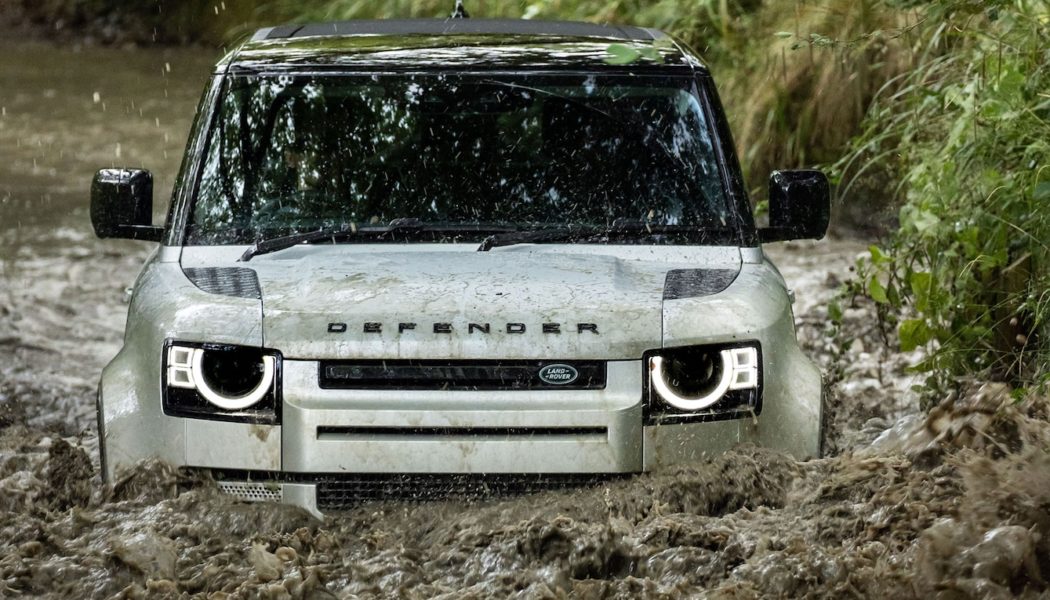Jaguar has a new name for its global strategy that encompasses big changes to the Jaguar Land Rover vehicle lineup as the brands reposition themselves and transition to an electric future: Reimagine. The changes, announced in February, will result in a smaller, more focused portfolio in the interim.
No new Jaguars will be added to the current lineup until 2025, when the luxury car brand will go fully electric. Land Rover will take a longer path to electrification. The goal of 1 million global sales annually has been abandoned for a more realistic 400,000-450,000 units.
That means the company’s U.S. product lineup will be forced to maintain the status quo for the next few years. What will the impact be in the near-term, and how will Jaguar and Land Rover customers adjust to the new offerings when they finally arrive? We turned to Joe Eberhard, president and CEO of Jaguar Land Rover North America for answers.
Shrinking Sales for Jaguar Land Rover
Eberhardt is well aware of the problem and the challenges. U.S. sales fell to 97,417 in 2020 from a peak of 125,787 in 2019—still better than the 2011 trough with only 50,375 vehicles sold. Sales did not drop off as much as expected during the pandemic and were showing signs of recovery until the semiconductor chip shortage and other issues affected production again.
The automaker is essentially out of inventory and sitting on a global order bank of almost 100,000 vehicles, mostly in Europe. In the U.S. vehicles are essentially sold as soon as they are unloaded from the truck. Eberhardt says the pain of shortages is being shared equally; the U.S. is not suffering more than other regions or receiving less inventory because North America turns vehicles around the fastest. He forecasts U.S. sales for the rest of the year should only be down by 10-20 percent and customers have become more comfortable with ordering vehicles as opposed to buying off the lot.
Will Smaller Showroom Deter Customers?
But will the decision to drop models and future vehicles, and rely on the current lineup, cause irreversible damage before a new wave of vehicles comes to the rescue? Eberhardt smiles and says this is what he has to work with, so the goal is to make the existing portfolio as competitive as possible. No apologies, no attempts at hyperbole.
Overall, the automaker is going from six vehicle architectures to three: two for Land Rover and one for Jaguar. Overlap between the two brands will end; they will have separate architectures (an all-electric one for Jaguar, and a pair of flexible ICE/hybrid/BEV capable architectures for Land Rover), powertrains, design languages, personalities, and degree of electrification.
Jaguar Reinventing Itself
Jaguar is the brand hardest hit. The brand will be fully electric in 2025 with only a few nameplates from the brand’s single dedicated electric vehicle platform.
That next-generation XJ was to be all-electric, reportedly to be joined by an electric J-Pace three-row SUV and a lower-riding “Road Rover,” and all were to be built on the Modular Longitudinal Architecture platform. But this platform was cancelled, and JLR had to write off about $1.2 billion of investment already spent on the MLA-mid program that did not produce the emissions cuts needed.
The trimming of the trims is dramatic: Jaguar goes from 51 derivatives of its five 2020 models to only 17 derivatives for the 2021 model year. It simplifies ordering, stocking, and manufacturing for Jaguar and the purchase decision for consumers. It will also help Jaguar deliver a more targeted message to consumers.
Taking Jaguar Upstream
Jaguar will move more upscale with its few offerings—in part by dropping the XE. In the interim, the 2021 Jaguar XF midsize sedan gets a major overhaul as well as fewer trim levels and a price cut. The 2020 Jaguar XF had a price range from $52,250 to $69,350 with 10 derivatives. For the 2021 Jaguar XF, there are only three derivatives and pricing ranges from $45,145 to $51,145 with about $10,000 in additional content and features.
The updated XF has new LED lights front and back. Inside everything but the glovebox was changed, with new materials and colors. The big advance is the new infotainment system with an 11.4-inch slightly curved touchscreen and the new Pivi Pro software designed to erase memories of glitchy JLR systems in the past.
Eberhardt thinks consumers will appreciate a competitive sedan that is more focused, offers fewer derivatives, and comes in at a good price—and that sales will grow as a result.
What Does Future of Jaguar Look Like?
Thierry Bollore, who took over as CEO of Jaguar Land Rover last September, said Jaguar will move away from SUVs. Eberhardt says the comments were taken out of context and he is not worried the brand will be reduced to slower-selling sedans, sports cars, and wagons.
As for consumer acceptance of a fully electric Jaguar lineup in the future, Eberhardt says the automaker does not pretend to have all the answers. But the industry is moving to an all-electric future and the hope is consumers embrace it. The transition will take time and customers will need to be convinced electric motors and batteries are the best powertrain, he says.
“Once people make the switch, they’ll never come back,” he says. “This is just the beginning of what EVs can do.”
Once infrastructure is in place and people have home chargers, Eberhardt says we will see mass adoption. But whether that is five years out, or 10, he cannot say.
JLR, as a small-scale automaker, can’t play in all segments but is taking trends into consideration and acting accordingly. “Even if the customer is not looking ready today, we have to push the envelope.” That is why Jaguar is going all electric in 2025 and Land Rover will slowly follow suit.
Land Rover Has a More Robust Lineup
Land Rover has eight models that fall within three families of SUVs: Discovery, Defender, and Range Rover, each considered a sub-brand. In the future, all Land Rovers will come from one of two architectures, the flexible MLA for large Land Rover SUVs and new Electrified Modular Architecture (EMA). Both can accommodate hybrids as well as battery-electric vehicles.
Land Rover will introduce six battery-electric vehicles by 2026 but will retain a mix of BEVs and vehicles with internal combustion engines. The first all-electric vehicle is expected in 2024, and the brand won’t be all electric until 2036.
2021 Land Rover Defender 90 Added to Lineup
The second stage is the addition of the two-door 2021 Land Rover Defender 90. Eberhardt does not know what the mix will be between the two, and says it is impossible to gauge yet because inventories are so strained.
A V-8 is coming for both Defender models at the end of the summer.
We expect the fifth-generation Range Rover next year. Eberhardt says the cadence of future product rollouts remains intact despite temporary delays—so we take that as assurance it remains on track to launch next year, barring unforeseen circumstances.









